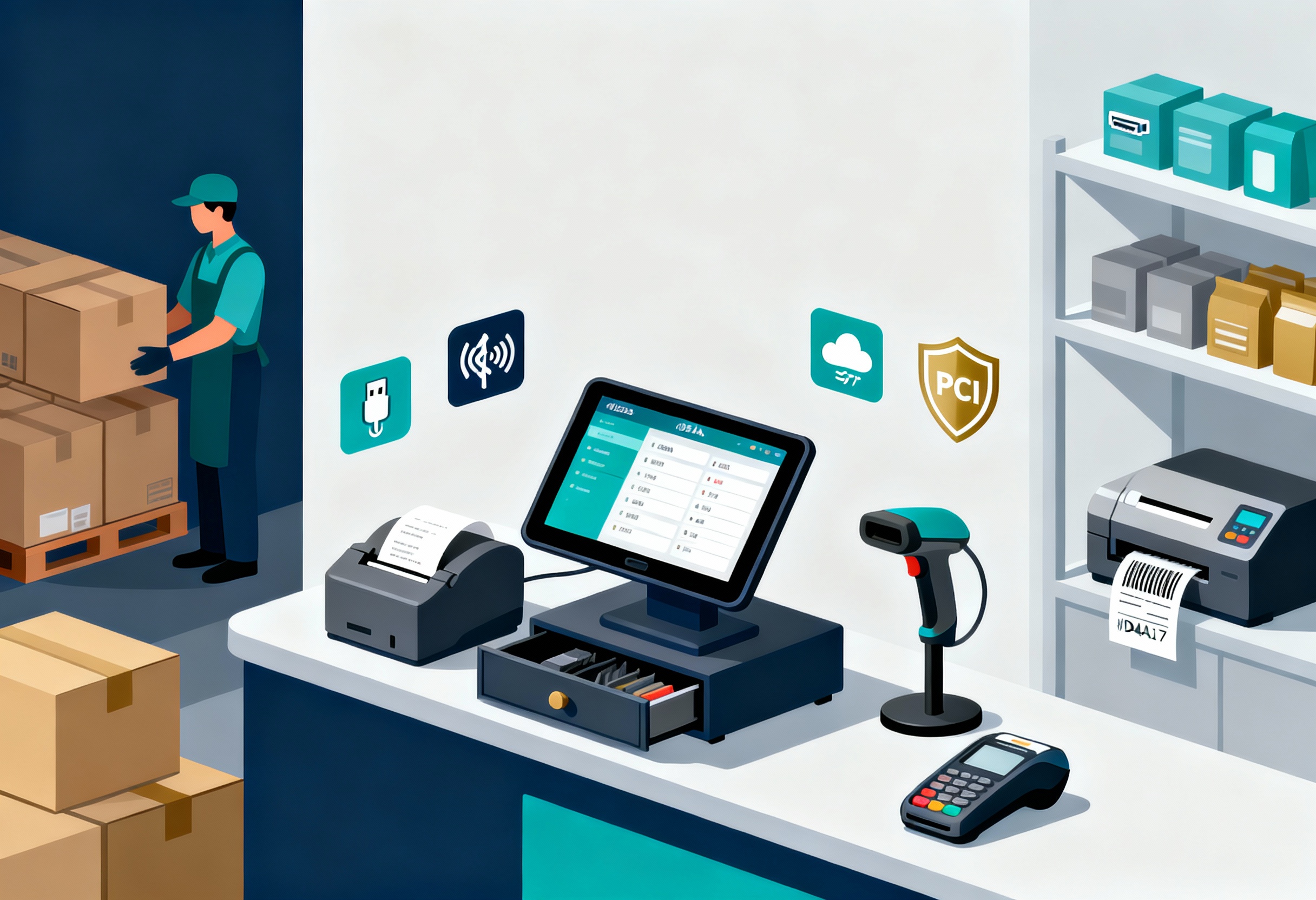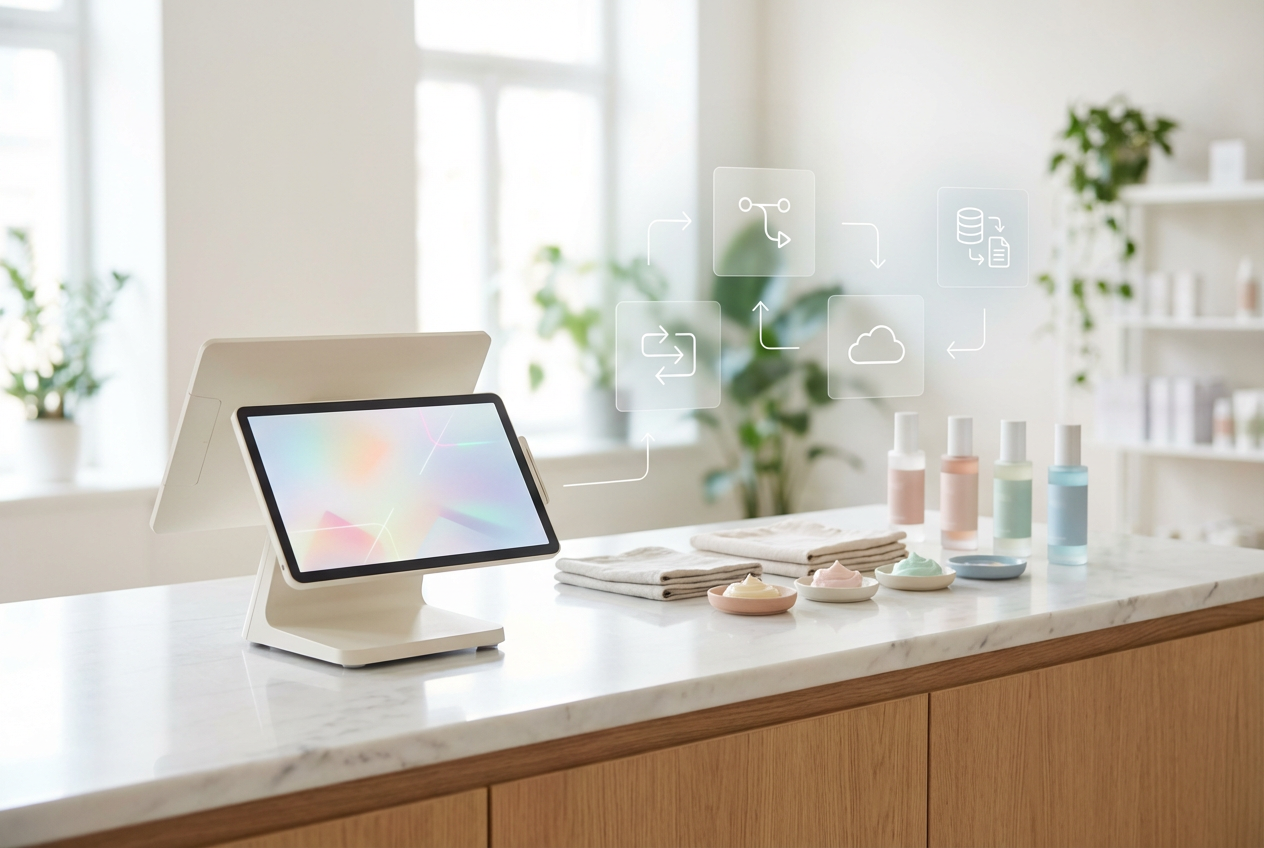Owning a WooCommerce online store and thinking of expanding with a physical store? Then WooCommerce POS hardware might be the one of the first things to look up. Without the right devices, even the most powerful POS software struggles to deliver efficiency.
In this article from ConnectPOS, we will explore the essential hardware you need to pair with your WooCommerce POS system to improve customer experiences, streamline operations, and future-proof your retail business.
Highlight:
- POS terminals, card readers, and receipt printers are the foundation of smooth, reliable checkout operations.
- Scalable, durable hardware like barcode scanners, scales, and kiosks enhances efficiency and adapts to your retail growth.
WooCommerce POS Hardware Basics
Before diving into specific devices, it’s important to understand the role of WooCommerce POS hardware. This equipment serves as the physical bridge between your digital store and real-world sales. It guarantees that payments are processed quickly, receipts are issued instantly, and stock levels are updated in real time.
Some basics to keep in mind:
- Compatibility: Not all hardware integrates seamlessly with WooCommerce POS systems. Always verify integration with your POS provider.
- Scalability: Choose hardware that can grow with your business. For example, scalable terminals and modular cash drawers.
- Durability: High-quality POS hardware minimizes downtime and decreases maintenance costs.
- Cloud synchronization: Modern devices often integrate with cloud-based POS software, ensuring data remains accessible across multiple locations.
What Hardware to Use with Your WooCommerce POS System?
The right WooCommerce POS hardware setup enables your retail store to handle payments, track inventory, and deliver efficient customer service. Below are the essential and optional devices for an optimized setup.
POS Terminal
A POS terminal serves as the command center for your WooCommerce POS system. Whether you opt for an iPad, all-in-one system, or desktop, the terminal is where database, transactions, and control converge. The global POS terminal market alone was estimated at USD 113.38 billion in 2024, with projections reaching USD 181.47 billion by 2030.
- iPad/Tablets: Flexible, portable, and sleek; perfect for mobile checkout.
- All-in-one terminals: Professional-grade systems with built-in cash drawers and receipt printers.
- Desktop computers: Suitable for larger retailers with fixed checkout counters.
Credit Card Reader
A dedicated credit card reader is indispensable for accepting modern payment methods. Your hardware should support EMV chips, NFC/contactless payments (e.g. Apple Pay, Google Pay), and traditional magnetic stripes.
Given that contactless and digital payments are increasing rapidly across retail sectors, selecting a reader with broad protocol compatibility is crucial for future-proofing your setup. No specific global statistic tied to card readers was identified in the sources, but this component is universally required in modern POS ecosystems.
Receipt Printer
Even with digital receipts rising, a receipt printer remains essential in many retail environments. Thermal printers are fast, quiet, and low-maintenance; impact (dot-matrix) printers work better under harsh conditions (hot kitchens, dusty environments).
Upgrading to modern, robust hardware leads to fewer failures and downtime. Newer printers and components offer higher uptime and reliability, reducing interruptions at checkout lanes
►►► Optimal solution set for businesses: Multi store POS, Next-gen POS, Inventory Management Software (MSI), Self Service, Automation, Backorders
Cash Drawer
If your business still accepts cash, a cash drawer is vital for secure money handling. Modern drawers can be electronically connected to your POS terminal, opening automatically when a transaction is processed.
Look for drawers with durable steel construction, multiple bill and coin compartments, and lockable designs for added security.
Barcode Scanner (Optional)
Using a barcode scanner accelerates checkout and minimizes manual entry errors.
- 1D scanners manage standard barcodes.
- 2D scanners handle QR codes and mobile tickets (e.g. for loyalty apps).
A functional POS system that includes barcode scanning is especially valuable in environments with many SKUs; efficient scanning helps streamline checkouts and reduce mistakes.
Scales (Optional)
For retailers handling items sold by weight (grocery, bulk products, delis), integrated scales are indispensable. They automate pricing calculations and ensure consistency between your POS and what the customer pays.
While I did not find a precise statistic for POS-scale integration, industry practice emphasizes its importance in certain verticals.
Customer-Facing Display (Optional)
A customer-facing display (often a small screen visible to the buyer) builds transparency by showing each item and total during checkout.
Such displays help reduce disputes and improve customer trust. Also, they can double as promotional displays for loyalty, cross-sells, or instant offers. I did not find a direct statistic specifically for customer-facing displays, but their adoption is increasing in modern POS deployments.
Kiosks (Optional)
Self-service kiosks let customers browse, order, and pay on their own. Many modern retailers use kiosks to offload checkout pressure and enhance experiences.
For example, cloud-based POS and omnichannel systems are increasingly adopted (72%+ of retailers in 2025 use cloud systems), that adoption supports kiosk flexibility and integration
ConnectPOS WooCommerce POS Solution
ConnectPOS offers a comprehensive POS system built to integrate directly with WooCommerce stores, ensuring real-time synchronization of products, orders, and inventory between online and offline channels. With some benefits:
- Cross-platform compatibility: ConnectPOS is designed with cross-platform flexibility, meaning it works seamlessly on iPads, Android tablets, desktops, and even mobile devices. This flexibility allows retailers to adapt their POS system to their preferred hardware setup without being locked into a single device.
- Peripheral support: One of ConnectPOS’s greatest strengths is its compatibility with leading POS peripherals such as receipt printers (Epson, Star Micronics), barcode scanners (Honeywell, Zebra), and card readers (Square, Stripe, Ingenico).
- Cloud synchronization: With real-time cloud synchronization, ConnectPOS ensures that data from sales, inventory, and customer activity is updated instantly across all locations. For multi-store retailers, this means inventory levels are always accurate, avoiding overselling or stockouts.
- Omnichannel features: ConnectPOS goes beyond traditional POS by offering true omnichannel capabilities. It supports both in-store and online sales within one unified system, meaning businesses can manage orders from their WooCommerce store and brick-and-mortar shop in real time. Customers can enjoy flexible shopping experiences such as buy online, pick up in-store (BOPIS) or in-store returns of online orders, strengthening customer satisfaction and loyalty.
- Scalability: Built for growth, ConnectPOS is suitable for both small and medium-sized enterprises (SMEs) and large-scale enterprise retailers. For smaller businesses, it offers an affordable, easy-to-use solution that simplifies day-to-day operations. For larger retailers, it provides enterprise-grade features such as multi-store management, advanced reporting, and API integrations with ERP or CRM systems.
FAQs: WooCommerce POS Hardware
What is the minimum hardware required for WooCommerce POS?
At a minimum, you need a POS terminal, a credit card reader, and a receipt printer. A cash drawer is recommended if you handle cash transactions.
Can I use my existing hardware with WooCommerce POS?
Yes, in most cases. However, always check with your POS provider to ensure your devices are compatible and supported.
How much should I budget for POS hardware?
Costs vary depending on your setup. A basic hardware package may start at $500–$1,000, while advanced setups with kiosks and customer displays can exceed $3,000.
Conclusion
In sum, choosing the right WooCommerce POS hardware is critical to running a smooth, efficient, and scalable retail operation. With essential devices like terminals and card readers to advanced options like kiosks and customer displays, the right hardware transforms how your store operates.
For businesses seeking maximum compatibility and performance, ConnectPOS offers a robust WooCommerce POS solution that integrates seamlessly with all major devices. Ready to future-proof your store? Contact us today to build a hardware setup tailored to your needs.
►►► Optimal solution set for businesses: Shopify POS, Magento POS, BigCommerce POS, WooCommerce POS, NetSuite POS, E-Commerce POS



